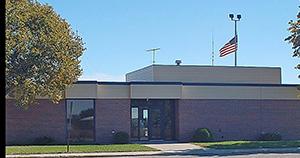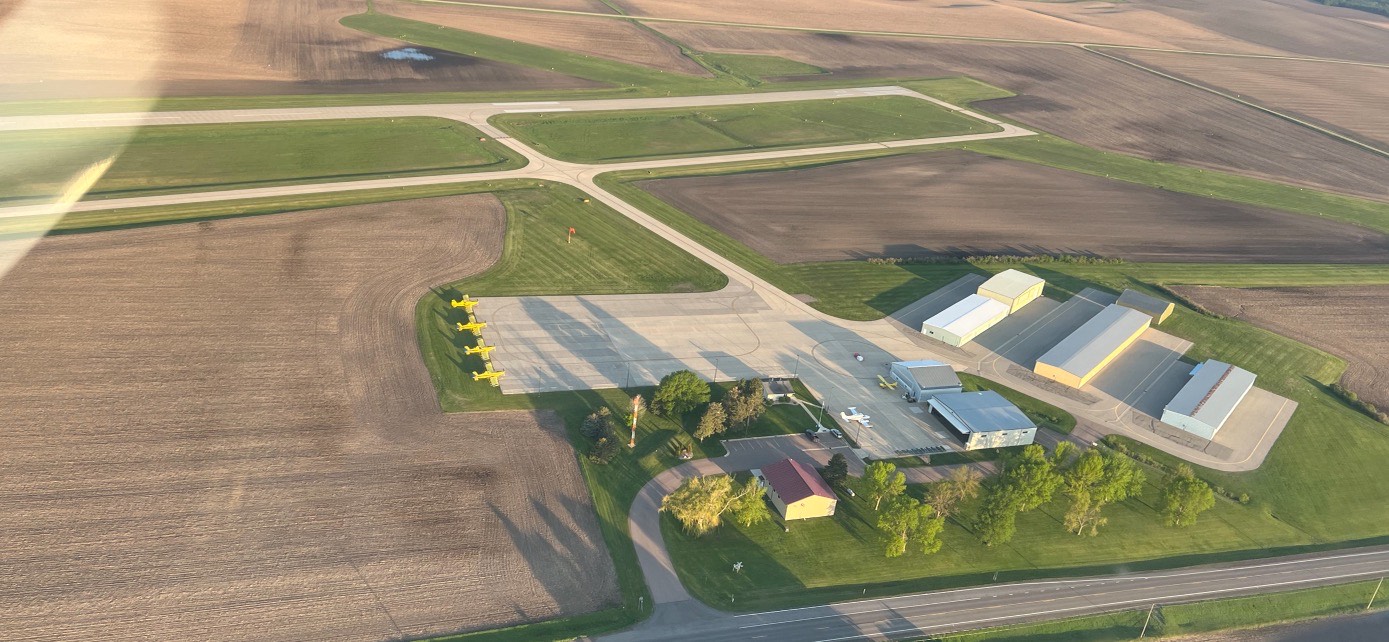
Worthington Municipal Airport is located just outside the city of Worthington in southwestern Minnesota. The airport has been managed by Cameron Johnson since 2001. Johnson also owns the airport’s fixed-base operator, Integrity Aviation, a provider of flight instruction and aviation services. Johnson has a degree in aviation technology and is a corporate pilot, flight instructor, and aircraft maintenance inspector.
The airport has two runways, an ILS system, and multiple LPV GPS approaches, making it very accessible in less-than-ideal weather, Johnson says. There are 22 based aircraft, with most operations consisting of corporate traffic flying to local businesses. Major employers in the area include JBS Swift & Company, Prairie Holdings Group, and Sanford Medical Group. Air ambulance service and transient recreational travel is also a steady presence, as are agricultural operations in the summer.
What the airport has working in its favor is an infrastructure that can easily accommodate a large range of aircraft, an executive terminal with great amenities, and a full complement of services for the aviation community, including 24/7 fuel, a fully staffed maintenance shop, rental aircraft, flight instruction, 14,000 square feet of hangar and maintenance space, and experienced corporate pilots. The airport is also home to a nonprofit organization that works with pilots and mechanics, training them for service with aviation humanitarian and mission organizations around the world.

Johnson knows a bit about the airport’s history, reporting that in the 1930s, an airport was established where I-90 now bypasses Worthington. A beacon installed on top of the Nobles County courthouse used to guide pilots to the airport. Worthington Junior College (now Minnesota West Community and Technical College) operated a Civilian Pilot Training program at this location during World War II. The airport was moved to its current location after the war and dedicated in 1947. From 1969 to 1985, Worthington was part of the route system for North Central Airlines, and then part of the Essential Air Service program until 1999. The Worthington Civil Air Patrol has remained active in training adult and youth air and ground teams since 1942.
The airport is largely self-sustaining through land leases and state and federal funding—and hence, little burden to the community tax base, Johnson says. As with many other small airports, however, many in the community aren’t aware of the important economic benefit it provides.
Johnson says the last decade was devoted to larger capital projects including new T-hangar and corporate hangar construction and a terminal update and remodel. Most recently completed projects include extending a taxiway, installing new hangar doors, and adding new concrete on the ramp.
The pandemic has reduced traffic somewhat; corporate flying, for instance, has decreased as a result of destinations in lockdown, Johnson says. Conversely, flight instruction has increased. “Overall, we have seen the pace stay pretty constant. Where one area slows, another area increases. Some clients may not be able to fly as much, but we have added new corporate clients who want to utilize business aviation—this balances things out,” he says.
What Johnson enjoys most about his work is building relationships with diverse clients and helping them achieve their goals. “The aviation community is great,” he says. “I used to run an FBO where the fuel pump was simply left on 24/7, and people just left a check or cash in a box. We never lost a drop.”
And the airport environment is a great place to raise kids, he says. “Our house sits right on the field, so we never leave aviation.”

